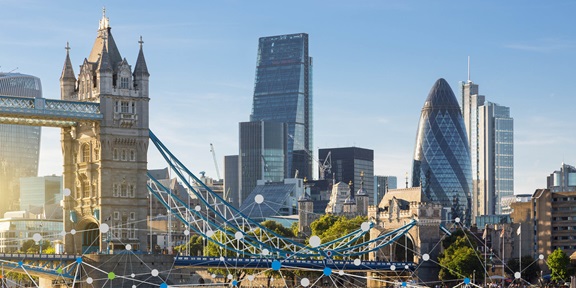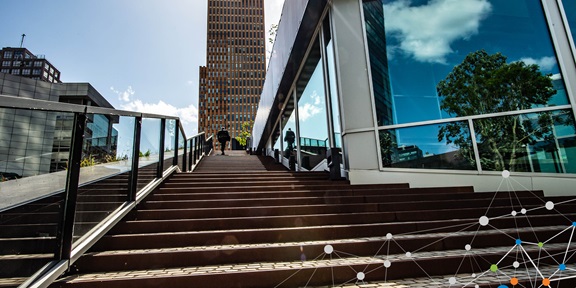On Wednesday, a draft agreement was released by COP26 president, Alok Sharma, while the Ortec Finance team attended the World Biodiversity Summit, the Roundtable on Low Carbon and Paris-aligned Index Investing, and the Sustainable Investment Forum. As negotiations rounded off for the day on Wednesday, China and the US surprised the world with a plan to work together on cutting greenhouse gas emissions from now until 2030.
Huge Surprise from China and US
The China-US Joint Glasgow Declaration on Enhancing Climate Action in the 2020s was an announcement that came about just before the end of COP26— the joint statement details the close collaboration of the world’s two largest emitters to reduce emissions in the next 10 years. The US and China said they would work together on some key areas: methane, transport, energy, and industry emissions. ‘Climate change is becoming an increasingly urgent challenge. We hope this joint declaration will help [the world] achieve success at COP26’, said Xie Zhenhua, head of the Chinese delegation.
John Kerry, the US’ Special Envoy on climate, said: ‘This is a roadmap for our countries and future collaboration. China and the US have no shortage of differences. But cooperation is the only way to get the job done. This is about science, about physics.’ We at Ortec Finance welcome the collaboration between the US and China, however remain cautious as the phase out of domestic coal was once again not mentioned.
Draft COP26 Agreement
This draft will be under intense discussion in Glasgow in the coming 48 hours— it calls upon countries to phase-out coal and petroleum, and to strive for deeper cuts in carbon emissions by next year in order to limit global warming to 1.5oC. If adopted, it would be the first time that a COP would officially call for the phase out of fossil fuels. On Wednesday, COP26 President Alok Sharma released the text of the proposed agreement. The draft calls on countries to submit targets for net-zero emissions and plans to achieve them, as well as to boost shorter-term targets by 2023 in the next year. Which means that the so-called Nationally Determined Contributions (NDCs) would be under revision every year instead of every five years.
World Biodiversity Summit
The link between biodiversity and climate change is undeniable. As the climate continues to change and the planet heats up, habitats will continue to degrade and species will go extinct. The three of these factors threatens the long-term resilience of our planet. In order to save the integrity of our ecological systems on which all living creatures depend, investors must play a role. Investors have the power to play a positive role by investing in ecological forms of agriculture, restorative land, and forestry management. While climate change is a global phenomenon, the effects are felt differently across the globe. Food systems were built in a fragile way—with monoculture and chemical fertilizers degrading the soil. Regenerative land use is needed to build a climate resilient food system, particularly for developing countries where food scarcity is already an issue.
At the World Biodiversity Summit, the Ortec Finance team met a lot of passionate people from all over the world. The conclusion is that financing nature-based solutions is not a simple endeavor and investors need to go on a learning journey to make sure their money is effectively spent. We need to embrace the value but also the complexity of ecosystems. Astanor Ventures is an investor that brings together capital, knowledge and a network of entrepreneurs, impact investors, technologists, scientists, farmers, chefs, policy makers. Emmanuel Faber, one of the partners at Astanor Ventures, stressed the need for a local and tailor-made approach for the different agricultural systems around the world: ‘Climate change is affecting farming conditions in different ways depending on where you are’ therefore ‘the food system needs to be re-localized as we have grown the food industry via not very many species and at a global level.’
But it is not only about food. Nature-based solutions and natural capital should also focus on restorative land and forestry management in relation to the whole ecosystem, as signaled by Rebekah Braswell, Chief Commercial Officer at Land Life Company. ‘Climate and biodiversity are incredibly linked, [however] the narrative should be about ecosystems rather than trees’. Rebekah is right, Rosanne Lam from the Climate & ESG Solutions team at Ortec Finance says, ‘the climate change narrative often becomes an accounting exercise for carbon. But a carbon-based approach is an incredibly small silo— reforestation is a solution that can provide both climate and biodiversity benefits but only if it is done right. Trees planted for carbon credits should both be a locally-present species and be planted in close proximity to each other in order to foster an environment biodiversity can flourish in. Additionally, the trees planted should be in the ground for the long-term, rather than quickly cut down for biomass or other uses.’
The Roundtable on Low Carbon and Paris-aligned Index Investing
At the Roundtable on Low Carbon and Paris-aligned Index Investing the difference between Paris-Aligned and Transition Indexes was explained. A major difference is that the transition indexes still contain fossil fuel producers. Which means that even though both of these types of indexes are calibrated to reach net-zero by 2050, they have different starting points and allow for different stewardship approaches. The biggest shift in the low-carbon index industry was characterized as a movement away from a so-called ‘relative’ decarbonization towards ‘absolute’ decarbonization. This implies that investors can no longer meet decarbonization targets by keeping emission levels constant and increasing their Assets Under Management (AUM). Despite growing AUM emissions have to actually decrease. This will inevitably imply an increasingly large tracking error to a standard market cap weighted benchmark. This is something investors will need to become comfortable with.
For us at Ortec Finance, this is fascinating and raises all sorts of questions. For example: when will the automatic carbon budget based rebalancing, that is backed into some benchmark provider’s methodologies, result in an ‘automatic’ divestment of fossil in these transition benchmarks? If all benchmark providers are tracking similar scenarios – mostly based on those of the International Energy Agency, will this happen at the same time? What will be the impact on the equity markets? We look forward to delving into these important questions with our clients and partners.
Sustainable Investment Forum
At the third gathering at the Sustainable Investment Forum, many speakers stressed the need for new technologies for decarbonizing the so called ‘hard to abate’ sectors. Countries like the UK depend on these technologies to be able to meet net zero in 2050 targets. Industry, including steel, can then reduce its emissions from its current contribution of 16% of total British emissions to only 1% by 2050. To reach that goal, the whole supply chain of the industry has to be involved in cutting back emissions. Investors have been actively engaging with steel users on their scope 3 emissions, which led to the steel users actively applying pressure on steel producers to decarbonize steel production. In order to switch to alternative energy sources for steel production, this transition is in need of talented engineers and chemists. These examples discussed at the Sustainable Investment Summit illustrate the influence of investors in changing the real economy. By highlighting the scope 3 Greenhouse Gases and life-cycle emissions in measurement of portfolio emissions and alignment, investors can drive self-reinforcing cycles in the real world.
At the forum it also became clear that companies that are already at the forefront of the transition to sustainable business – the so-called ‘hard to abate’ sector leaders – seem to be changing their language when they talk about their strategy. The Ortec Finance team noticed that they are using terms such as ‘business resilience’ with a view to ‘surviving the transition’. A sign that they are preparing themselves for some major shifts?

Thinking through the financial impacts of various climate risk scenarios and creating a net-zero roadmap may feel somewhat overwhelming. At Ortec Finance, we are here to help. Don’t hesitate to reach out to us, or take a look at our Climate & ESG solutions page.
Learn more about Climate & ESG solutions here:










